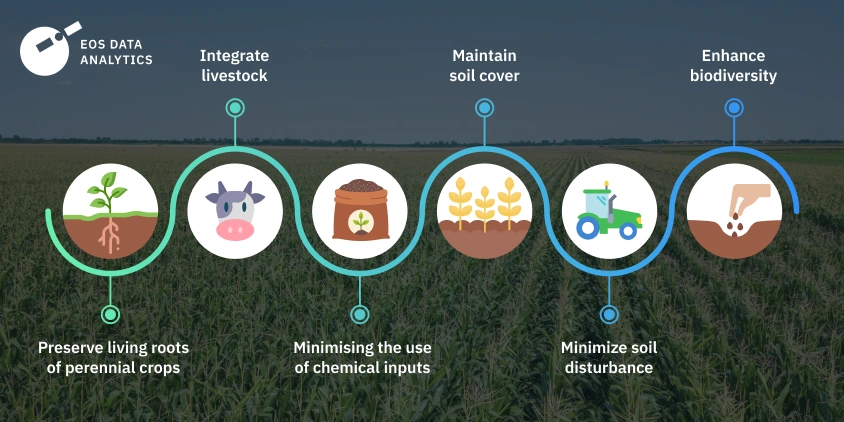Regenerative Agriculture: Impact on Natural Flavour Quality
- Digital Marketing
- Jul 14
- 4 min read
In a world that is becoming increasingly conscious of sustainability and quality, regenerative agriculture is emerging as a powerful solution. This holistic farming method not only improves soil health and biodiversity but also has a profound effect on the flavour of the food we consume. Whether it’s a juicy tomato, aromatic herbs, or flavour-rich coffee beans, regenerative practices are proving to be the secret behind the superior taste and sensory appeal of agricultural products.
Let’s dive into how regenerative agriculture enhances natural flavour and why it matters to farmers, food manufacturers, chefs, and consumers alike.

What Is Regenerative Agriculture?
Regenerative agriculture goes beyond traditional organic farming. It is a conservation-focused approach that restores and revitalizes the soil, improves water cycles, increases biodiversity, and draws carbon out of the atmosphere. Practices include cover cropping, crop rotation, minimal tillage, composting, rotational grazing, and integration of livestock.
The goal isn’t just to sustain the land—but to improve it. This improvement in turn creates a healthier ecosystem, leading to better nutrient profiles in plants, which directly influence flavour.
The Link Between Soil Health and Flavour
Soil is not just dirt—it is a living, breathing ecosystem teeming with microbes, fungi, worms, and organic matter. The richness and balance of this underground biodiversity directly influence how plants grow and what they taste like.
Regenerative agriculture focuses heavily on rebuilding healthy soil. Healthy soil is rich in minerals and microbial life, which help plants absorb a more balanced spectrum of nutrients. These nutrients are essential for developing natural flavour compounds.
For example, a tomato grown in nutrient-depleted soil may look ripe but taste bland. In contrast, a tomato grown in regenerative conditions absorbs a variety of trace minerals and nutrients, developing complex sugars and acids that result in a richer, more authentic flavour.
Better Nutrition Means Better Flavour
Studies have shown that fruits, vegetables, and herbs grown through regenerative practices often have higher levels of antioxidants, polyphenols, vitamins, and minerals. These compounds not only contribute to the nutritional value but also affect taste, aroma, and mouthfeel.
A classic example is heirloom carrots grown using regenerative techniques. These carrots often exhibit an earthier, sweeter flavour with a satisfying crunch compared to conventionally farmed varieties. That’s because the rich soil provides the ideal conditions for flavour-enhancing compounds to flourish.
The Microbial Magic: Terroir and Flavour
In the world of wine, coffee, tea, and chocolate, the term "terroir" is often used to describe how local climate, soil, and microbial communities influence the flavour profile of the product.
Regenerative agriculture, by preserving the local biodiversity and avoiding chemical fertilizers and pesticides, helps protect and enhance terroir. The result? Coffee beans with deeper, more nuanced flavours, wines with robust character, and herbs that carry stronger aromatic oils.
In short, regenerative farming gives each crop a sense of place, enhancing its natural flavour signature in a way industrial farming simply cannot replicate.
Flavour Consistency and Supply Chain Benefits
For food manufacturers, consistency in flavour is critical. Regenerative agriculture can actually offer greater consistency over time. While conventional farms face increasing unpredictability due to soil degradation and climate change, regenerative farms build resilience. Healthier soils retain moisture better and support stable crop growth, even under challenging conditions.
This means more consistent crop quality, and hence, more predictable flavour—a major plus for chefs, flavour houses, and food producers.
Consumer Trends: The Taste of Sustainability
Today’s consumers are savvier than ever. They’re looking for food that is not only nutritious but also responsibly grown and great-tasting. Regenerative agriculture satisfies all three.
Farmers’ markets and premium grocery brands are increasingly showcasing regenerative products, boasting not just of sustainability but also of enhanced flavour. Marketing a product based on its “better taste due to regenerative farming” is becoming a powerful narrative.
The growing connection between ethics, environment, and flavour is changing consumer preferences—and regenerative agriculture is at the heart of this transformation.
Culinary World: Chefs Championing Regenerative Flavours
Many top chefs are now sourcing ingredients from regenerative farms because they value flavour above all. Ingredients with fuller, natural tastes elevate their dishes and bring a story to the plate.
Chefs understand that the intensity and complexity of flavour can only come from ingredients grown in living soil. From farm-to-table restaurants to Michelin-starred kitchens, regenerative agriculture is fast becoming a culinary standard.
The Flavour Industry’s Role
Flavour and fragrance companies are also taking notice. With the demand for natural extracts and authentic taste experiences on the rise, the quality of raw materials has become more critical than ever. Sourcing botanicals, herbs, and fruits from regenerative farms helps ensure deeper, more consistent flavour notes, which are essential for high-quality product development.
For flavour houses, supporting regenerative agriculture not only means better ingredients—it aligns with sustainability goals and appeals to eco-conscious clients.
Conclusion: The Future Tastes Better
Regenerative agriculture is more than a trend—it’s a necessary shift in how we grow and experience food. As the world becomes increasingly aware of environmental and health issues, practices that nourish the earth while enhancing the natural flavour of our food are no longer optional—they're essential.
From better-tasting produce to richer raw materials for the flavour industry, the benefits of regenerative agriculture are rooted deep in the soil and felt right on the tongue. If you care about flavour, you should care about how your food is grown—and regenerative agriculture is the path forward.








Comments